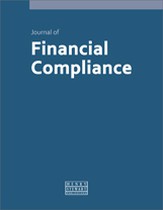The AnaCredit regulation is in place — a reflection on data-driven reporting: What has been achieved by the banks and regulators, and what remains to be done?
Abstract
By introducing the AnaCredit regulation, the European Central Bank (ECB) has taken the concept of data-driven regulatory reporting to an unprecedented level. In addition to an everincreasing burden of traditional template-based reports serving both supervisory and statistical purposes, credit institutions of the Euro area are requested to deliver micro-data on a loan-by-loan and borrower-by-borrower level on a monthly and quarterly basis. The data are compiled according to precise definitions and organised into an entityrelationship model. This innovative approach to data collection within the banking sector is premised on the following principles: any aggregated data can be obtained from granular data, but the reverse is not true — granular data enabling both drill-down and roll-up analysis; in order to be comparable, data need to be harmonised and standardised by way of common definitions and standards; data are of better quality when they are organised in a model reproducing business reality and input systems to the greatest extent possible; top-down indicators calculated from granular data are not necessarily known in advance as new indicators can emerge from correlations observed between the underlying data. This approach should alleviate the reporting burden put on credit institutions since it will be possible to compute new macro-prudential indicators from data that have already been collected. Ultimately, and to the extent that rules for data dissemination across the national and European authorities allow, it could also establish a bridge between statistical and supervisory needs, since numerous breakdowns required in templates forming part of the Capital Requirements Regulation (CRR)/ Capital Requirements Directive (CRD) IV package or in short-term exercises could be derived from AnaCredit data in a bottomup approach — or, AnaCredit data could be used as an analytical tool for supervisors. This paper explores, by illustrative examples, how some of the caveats of the AnaCredit regulation, from its conception to its application, may impede the fulfilment of its double objective with regards to the collection of high-quality granular credit data across the Euro area and to the reduction of the reporting burden. It concludes with a discussion of the necessity to break down the remaining silos within banks but also within national and European authorities, and to pursue the work initiated on a larger scale through initiatives such as the Banks’ Integrated Reporting Dictionary (BIRD) and the Integrated Reporting Framework (IReF).
The full article is available to subscribers to the journal.
Author's Biography
Olivia Hauet is business owner of regulatory reporting at Nordea. She has led the requirements work stream of the AnaCredit project and is co-chair of the BIRD (Banks’ Integrated Reporting Dictionary) Steering Group at the European Central Bank and of the Reporting and Statistics working group at the European Banking Federation. She has extensive experience of the financial services industry, which she has served for over 20 years by implementing front-to-back solutions worldwide within the government sector (Bank of Thailand, Banque de France, Banque Al-Maghrib, Bank of Russia), and also outside (commercial banks, pension funds, corporate treasuries). Olivia Hauet is a graduate of Écoles des Sciences Économiques et Commerciales (ESSEC) (MBA) in France.
